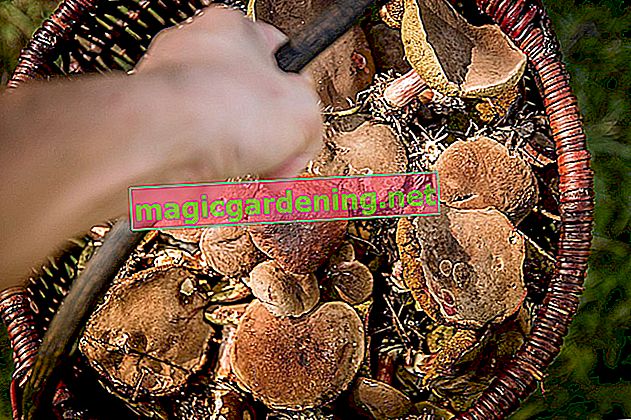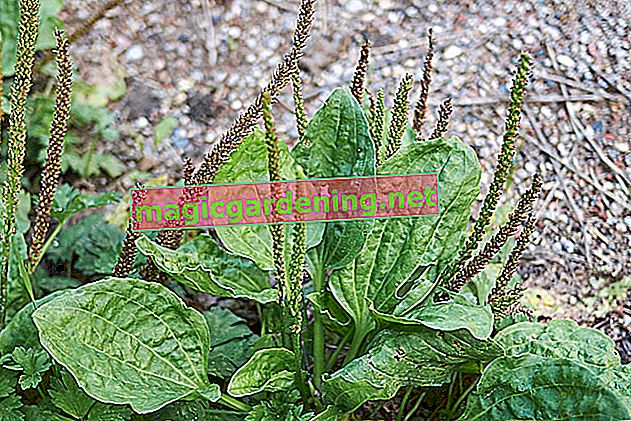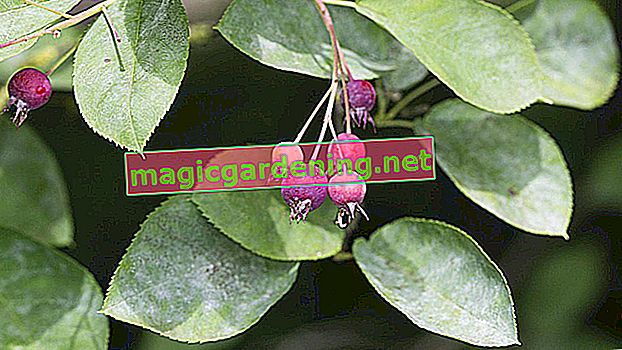
origin
“Christmas cactus” is basically not a species name, but a collective term for several types of leaf cacti from the Schlumbergera genus. These are native to the coastal forests of Brazil, where they grow as epiphytes (botanically) on tall jungle trees. The specimens bred for housing culture are exclusively hybrids, whereas the wild forms play no role as indoor plants and their population in their natural locations is in any case strongly endangered. The scientific name of the Christmas cactus, Schlumbergera, goes back to the French cactus collector and breeder Frédéric Schlumberger.
Continue reading
also read
- Schlumbergera truncata (Christmas cactus) - tips on care
- The Christmas cactus comes in many different colors
- How many species does the Schlumbergera (Christmas cactus) include
use
Since Christmas cacti come from subtropical and tropical regions, they are not hardy in this country and are therefore only used as indoor plants. Since the flower typically appears during the Christmas season, Schlumbergera is now part of the Christmas decoration in many households and is therefore available in many shops shortly before the festive season. The drooping shoots of this type of cactus are particularly effective in hanging baskets or tall vessels, where the colorful, lush flowers can easily grow over the edge.
Growth and size
In contrast to many other types of cactus, the Christmas cactus has a shrubby growth with long, flat and fleshy shoots. These hang down due to their length and weight, which is why the plant is best cultivated in tall pots or hanging baskets. In addition, the Christmas cactus does not have the classic spines that are otherwise characteristic of cacti, but instead have fine bristles on the leaf edges. With appropriate care, the popular leaf cactus can be many decades old and up to 40 centimeters high. Very old specimens measure a meter or more in diameter, and the plants lignify over the years from below.
Flowering, colors and flowering time
The Christmas cactus is so popular mainly because of its striking flowers. These are always located at the tip of the shoots, have an elongated shape and are pushed into one another like scales. The petals themselves are bent back a little so that the yellow stamens can clearly be seen. The pretty inflorescences, which are available in various red, pink and yellow tones as well as white, can grow up to ten centimeters. Schlumbergera develops a large number of these flowers between November and January, whereby the individual specimens last a maximum of five to seven days and are therefore not particularly long-lived. Due to the sheer mass - with good care - the short flowering time is hardly noticeable.
leaves
Typical of the Christmas cactus are its long, flat and strong green shoots, which consist of several, mostly oval to oblong egg-shaped and incised leaf members. Tiny, bristle-bearing areoles are located on their edge. The individual shoots can be up to a meter long.
fruit
A successful fertilization of the flowers actually never occurs in indoor culture, which is due on the one hand to the lack of insects in the winter season and the fact that the hybrids are mostly sterile. That is why Christmas cacti usually do not produce fruit. If you do it anyway, inconspicuous berries will develop. In these is the tiny, only one millimeter large seed.
Is Christmas Cactus Poisonous?
Schlumbergera is considered to be slightly poisonous, but at least does not pose a risk to adults. Nevertheless, you should not consume any parts of the plant, as this can lead to unpleasant, mild symptoms of poisoning. Even leaking plant sap should not be touched with bare fingers if possible, as it can cause skin irritation in sensitive people. Place the Christmas cactus out of the reach of children and seek medical advice immediately if your child has eaten any part of the plant.
For cats, on the other hand, the Christmas cactus represents a much greater danger, which is why you should always place the plant in a cat household so that the animals cannot reach it. It is well known that curious fur lovers like to nibble on indoor plants and often no longer have a natural feeling for what is poisonous and what is not. If your hungry cat has tried the Christmas cactus and shows typical symptoms of poisoning such as diarrhea and vomiting, you should consult a veterinarian immediately.
Continue reading
Which location is suitable?
As a typical rainforest inhabitant, the Christmas cactus does not like direct sun, but should still be bright. So do not place the plant directly next to a south-facing window, but rather in a shady place. Windows facing east or west are ideal, but Schlumbergera should not stand directly over a heater or in constant drafts. If there is strong sunlight over midday, it makes sense to shade the plant, especially in the summer months.
In summer, however, the Christmas cactus also feels at home in a partially shaded place outdoors, for example on the balcony or terrace. Between August and September, however, you should keep it as dark as possible, water little and fertilize it: As a short-day plant, Schlumbergera only forms buds when the days get shorter, it is dark for at least 12 hours at night and the average daytime temperature drops to below 23 degrees.
Also make sure that you do not change the location or only change it very seldom and do not turn the plant after the buds appear. The Christmas cactus often reacts very sensitively to changes in location and likes to shed buds and flowers as a result of such a measure.
Continue reading
Substrate
Schlumbergera feels most comfortable in loose cactus soil, which you can mix with expanded clay (€ 17.50 at Amazon *) or perlite (€ 32.90 at Amazon *) due to its better permeability. Make sure, however, that the potting soil is free of peat. The material is often added to many commercial potting soil, but is not tolerated by cacti such as the Christmas cactus. Good pot drainage is also important so that excess irrigation water can drain off and waterlogging does not even form.
It is best to put the Christmas cactus in a new planter with fresh soil immediately after buying it, as experience has shown that the pots from the nurseries are much too small.
Watering Christmas cactus
As a rainforest inhabitant, the Christmas cactus needs a very high level of humidity, which is why it should not be cared for over a heater if possible. Spray the plant regularly with low-lime water to create more comfortable conditions. In this country, many apartments for tropical residents are basically too dry in winter. Another specialty of Schlumbergera is its sensitivity to calcareous water, which can cause the plant to die. Use rainwater, boiled (and cooled!) Or very well stale tap water to water the plants.
The irrigation water should also be room temperature and not come fresh and cold from the tap. You can determine the right time to water with a finger test: The upper substrate layer should always dry completely between the individual waterings. After watering, however, the root ball should be completely moistened, and excess water that has run into the planter must always be removed.
Wilted leaves usually indicate that the substrate is too moist, but they can also indicate a lack of water. This often occurs through the use of peat-containing potting soil, as peat dries out quickly and in this state can no longer absorb water and of course no longer pass it on to the roots.
Continue reading
Fertilize Christmas cactus properly
Only fertilize the Christmas cactus during the time of bud formation and the flowering time, i.e. between October and January / February. Give the plant cactus fertilizer about every two to three weeks, which contains the required nutrients in the optimal concentration.
Continue reading
Cut the Christmas cactus correctly
If possible, the Christmas cactus should not be cut, as this can negatively affect growth and flower formation. In any case, this measure is not necessary, unless you want to gain cuttings for propagation or shrink a plant that has become too large. In this case, simply twist off the leaf links carefully.
You should also carefully pluck off those that have faded, as this is how Schlumbergera can often be persuaded to continue flowering cycles. The plant usually pauses for up to six weeks between several flowering cycles, during which it is watered and fertilized less often and kept darker and cooler (but not less than 16 ° C!).
Continue reading
Propagate Christmas cactus
Propagating a Schlumbergera is very easy: simply twist off some healthy, strong and non-blooming leaf limbs, let them dry a little and then stick them in peat-free cactus soil, perlite or sand. Spray the cuttings only a little, as high humidity is counterproductive for rooting cacti. The Christmas cactus is no exception.
For the same reason, you should never try to root the leaf limbs in the water. What works without any problems with many plants, in this case only leads to mold and rot.
Incidentally, the best time for propagation is right after flowering, around February / March. During this time the Christmas cactus starts its growth phase and is naturally designed for the production of growth substances anyway. However, it can take a few weeks for the small cuttings to take root: be patient and put the nursery pot in a bright and warm place until then.
sowing
In principle, it is also possible to propagate using seeds - either collected yourself or bought in stores - although this procedure takes a lot of time and is not without its pitfalls. First of all, you need seeds for this, which you can get yourself with a little luck. To do this, you need at least two flowering Schlumbergera that are not related to each other - so they cannot be mother plants and offshoots or cuttings from the same mother plant. Pollinate the flowers no later than three days after they have opened using a fine brush. With this you transfer the pollen from the flowers of one to those of the other. The fertilization has been successful if the ovary does not dry up afterwards, but swells. But now it is necessary to be patientbecause it takes up to six months until the fruits are ripe for the seed harvest. You can recognize the perfect degree of ripeness when the round berries, which are now about one centimeter in size, turn pink.
Cut open the fruit, take out the shiny black seeds and carefully remove any adhering pulp. Sow the seeds on sand or nutrient-poor potting soil. Since it is a light germ, the grains must not be covered with the substrate. It is best to grow the small cacti in a room greenhouse, because tense air - i.e. high humidity - is essential for successful germination. Temperatures between 22 and 28 ° C are ideal.
Continue reading
Repot
Always repot the Christmas cactus when the roots completely fill the previous plant pot. Even if this is not necessary, the plant should be supplied with fresh substrate about every two to three years.
Continue reading
Overwinter
The Christmas cactus is not hardy in our latitudes and is therefore only allowed to move to a protected spot outdoors in warm summers, if at all. Nonetheless, the plant needs a dormant period during which the buds are formed for the new flowering period. To do this, cultivate Schlumbergera in September in a shady spot at 12 to 17 ° C if possible, water it very moderately and do not fertilize it. It should be dark for at least 12 hours at night, which is why the plant should be placed in a room that is not artificially lit in the evening. Temperatures below ten degrees Celsius are not tolerated. From October the plant can finally return to its original location and is watered and fertilized as usual.
Continue reading
Diseases
Diseases caused by fungi or other pathogens are very rare in Schlumbergera. Instead, these cacti tend to shed the flower buds when they feel unwell. There are many reasons for this: drafts, rapid temperature changes, a dried-up root ball or waterlogging are possible causes. Turning the Christmas cactus also often leads to the shedding of the buds, as these then turn to the light again, are thereby weakened and therefore fall off. So make sure not to change your position in relation to the light source, especially during the budding period.
Continue reading
Pests
Pests are also rare on Schlumbergera. The only thing observed more often is an infestation with mealybugs and mealybugs, whose small, white “cotton balls” can be clearly seen on the green leaves of the plant. They can be wiped off quite easily, for which you can use simple baby wipes, for example.
Tips
If Schlumbergera does not bloom, it is often due to the lack of dormancy or a lack of nutrients.
sorts
There are six different types of Christmas cacti, with only hybrids in different colors being offered for room culture. Schlumbergera mostly blooms in red, but there are also pink and orange as well as yellow and white forms.
 LED-Silhouette Tapesil, 102x2x53 cm, metal, white 69.99 EUR Buy at Pötschke
LED-Silhouette Tapesil, 102x2x53 cm, metal, white 69.99 EUR Buy at Pötschke  LED light chain tree candles 25 pieces. for indoor use, 16.8 m, plastic, white 29.99 EUR Buy at Pötschke
LED light chain tree candles 25 pieces. for indoor use, 16.8 m, plastic, white 29.99 EUR Buy at Pötschke  LED light chain tree candles 25 pieces. for outside, 16.8 m, plastic, white 34.99 EUR Buy from Pötschke
LED light chain tree candles 25 pieces. for outside, 16.8 m, plastic, white 34.99 EUR Buy from Pötschke








